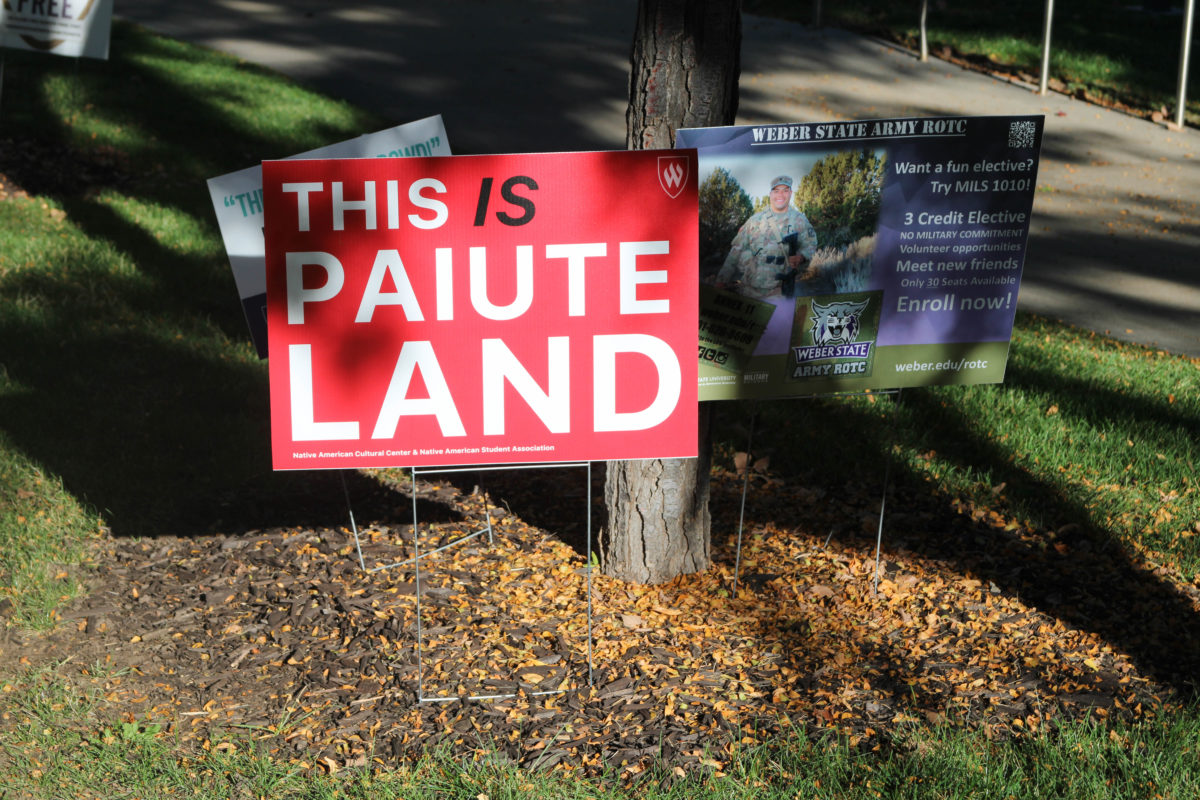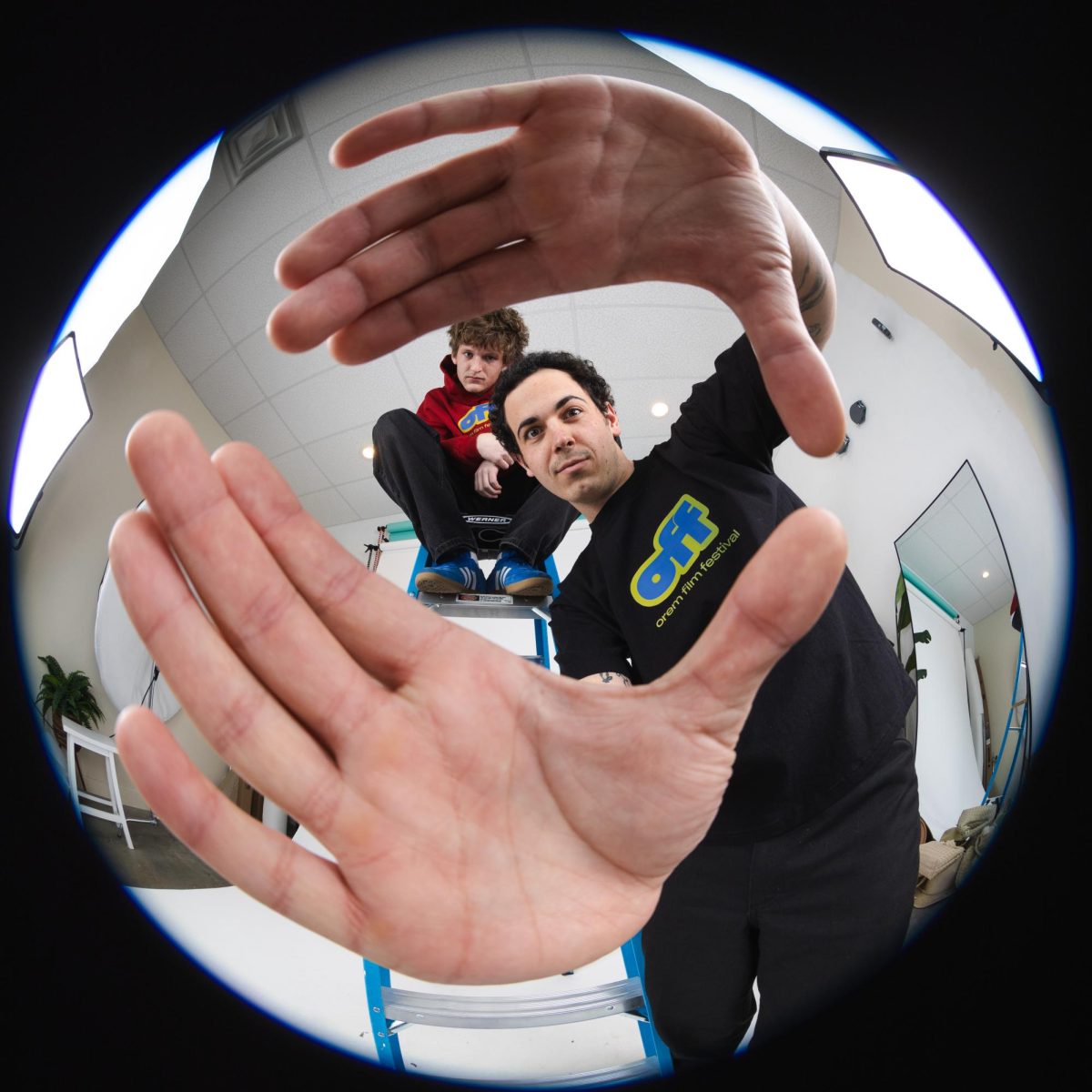Students walking around campus may notice new lawn signs around campus. Weber State University put land declarations to recognize the history of the land the university is on.
Amanda Jones, multicultural program manager with Native American focus, said that although the initiative was spearheaded by the Native American Student Association, it was a collaborative effort between the Stewart Library and the Native American Cultural Center.
“It’s more or less a type of installment to bring more of an awareness, to bring more of a visibility, and to bring the opportunity for individuals to reflect on how they view land acknowledgements and what it means to them in general,” Jones said.
Erich Goeckeritz, administrative associate for the Stewart Library, said the initiative is an answer to the question, “What can we do to try to put a physical land acknowledgment on the campus rather than just a statement that we read?”.
The question was posed last summer when planning for the 2023 Native Symposium and Stewart Library’s Native American exhibit.
Jones said the student feedback about the initiative has been positive and has helped create a sense of belonging that many students had been looking for on campus.
“It just gives them a way to feel a connection with the space that they are in,” Jones said.
Jones said faculty and staff have given positive feedback on the sign initiative as well.
Having physical signs posted around campus has helped bring awareness and actuality to the land acknowledgement within Jones’ division.
“We’ve really wanted to spark the conversation of land acknowledgements,” Jones said. “We have our Native Symposium coming up, so this is a really great segway into all of the events and everything that’s happening in November.”
The sign initiative can help bring awareness and help to indigenous individuals from others outside of their community.
“If an individual doesn’t understand what the land acknowledgement is or what it means, we hope that they use this as an opportunity to do their research,” Jones said. “Look into what they can do on behalf of helping these indigenous communities or to be an ally to their communities.”
















